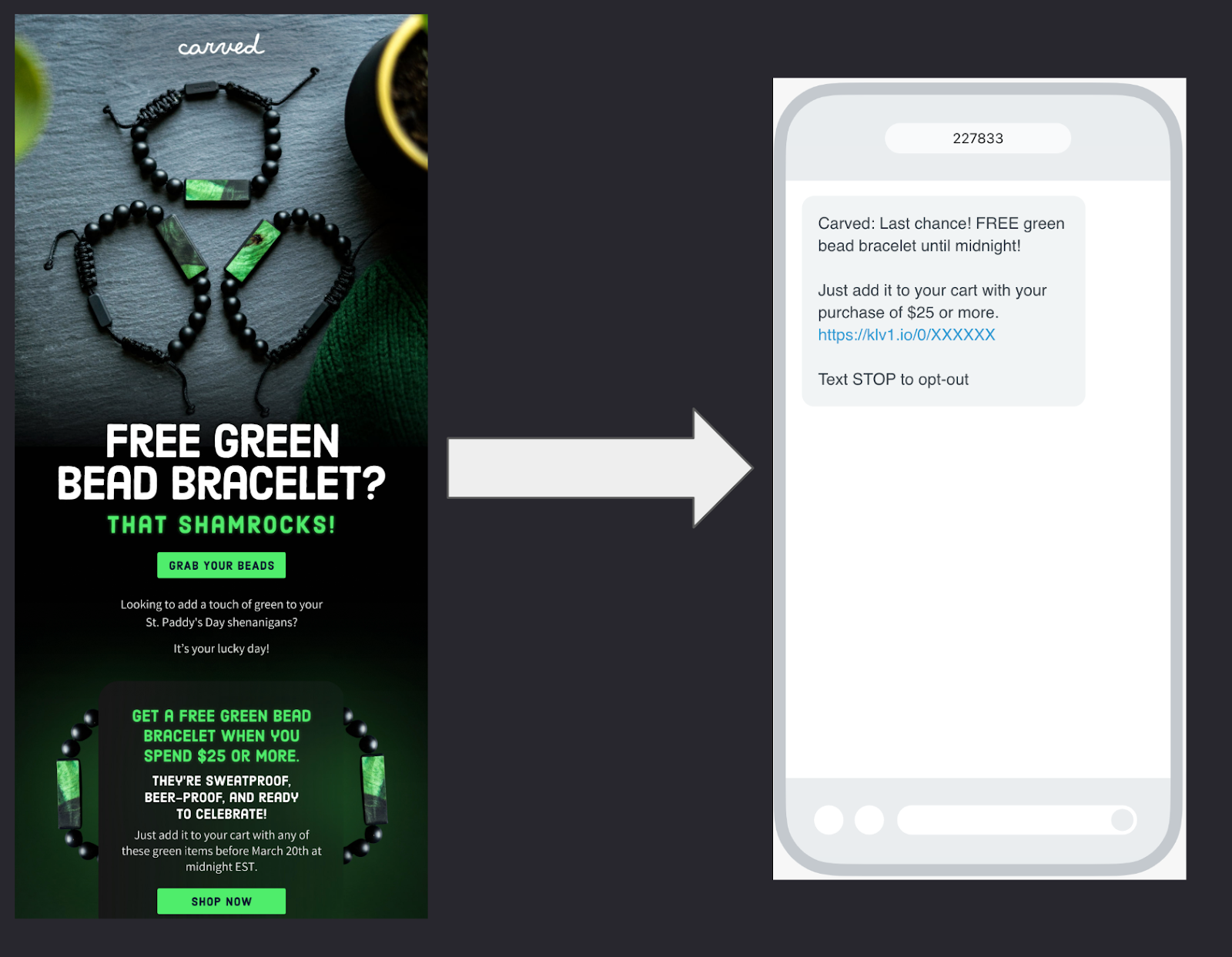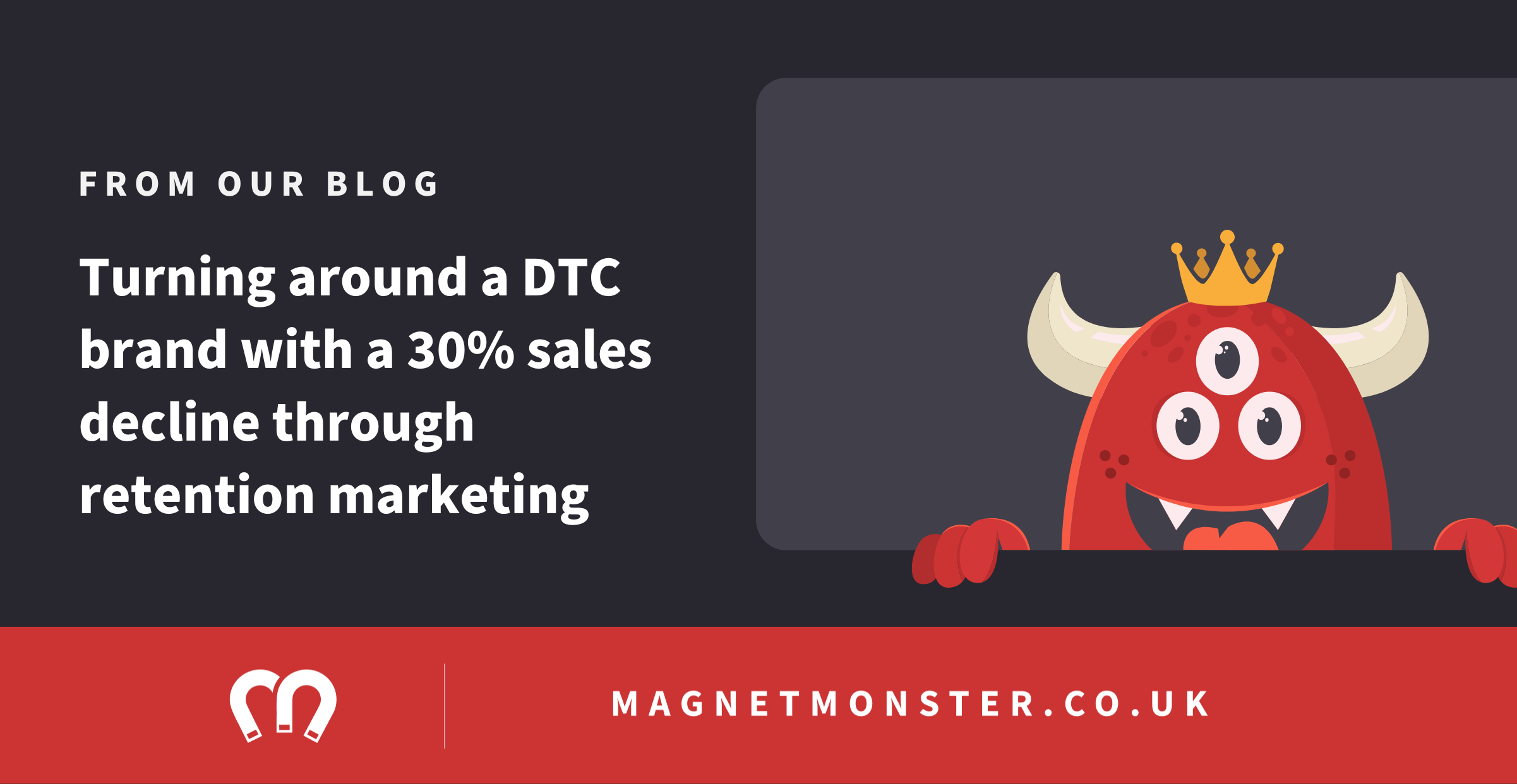A recent client recently approached us in a panic, with Q2 sales down in 2025 over 16% compared to the previous year. Here’s an overview of how this impacted retention marketing efforts, as well as the 8-step strategy our team has put together to get their business back on track.
further in depth reading
This is a collection of articles that will provide you with more information about our FREE email marketing course.
The Data Behind the Drop in Revenue
First, a bit of context about this brand:
They sell designer handbags, exclusively direct to consumer.
META is their obvious go-to acquisition channel, and they were recently impacted badly by the Trump Tariffs compressing margins in their business and causing instability.
This led to them reigning back on discounting the last quarter, a key promotional driver of revenue over their retention channels such as email and SMS.
In addition to this, we also seen the following email-specific statistics which were troubling:
- Flow revenue down over 28% YoY
- Campaign revenue down by 17.4%
- Email flow revenue per recipient down 23.7%
A quick surface-level analysis would lead you to believe that our strategy was failing.
However, we dug deeper.
Upon further investigation, we saw that the brand has acquired 30.2% LESS customers in Q2 versus 2024’s numbers!
Given that their purchase latency is quite long (the product is hardly consumable by nature), we took it upon ourselves to devise a strategy that could cover the shortfall in revenue whilst the acquisition team stabilised proceedings.
The 8-step strategy we created
1: Change promotional strategy
The brand had moved too far away from the drivers of campaign revenue over email.
While margins are tighter before, we realised that campaign performance will be sluggish without any incentives for this particular brand.
We are introducing incentives such as GWP, cost-saving bundles, gifting packages, and limited edition drops more heavily into future emails.
Yes, it’ll require more resourcing, but this is the way to salvage campaign performance and drive more returning customer revenue.
2: Increase Sending Frequency
While this brand already sends with a modest cadence of 2-3 times per week, we have decided to increase this until acquisition in the business stabilises to see if it can improve cashflow.
This isn’t a long-term solution, but it can help in the short-term.
3: Add high-intent retargeting
One of the ways we’ll be increasing frequency without adversely impacting deliverability is by adding high-intent retargeting into the mix.
This is a lesson from Monster Email Marketing, whereby we target people who clicked on emails & SMS but didn’t convert within 24 hours.
Here’s what it looks like in practice:

4: Expand segmentation net
Whilst the majority of our targeting focused on 90-day engaged email recipients, we’ve decided to go more broad, expanding the net occasionally to target people as wide as last having engaged 365 days ago.
This will be done carefully in order to protect deliverability, but we must squeeze the sponge in order to recover lost revenue, even if it’s just a temporary measure.
5: Double down on Direct Mail Reactivations
Unfortunately, a bi-product of increasing sending frequency, we will be churning email subscribers more quickly.
We’ve now convinced this brand to double down on incremental testing of winback campaigns with Direct Mail, as well as targeting existing customers disengaged with email.
The criteria for these will expand to broader segments once we validate incremental returns.
6: Collect UGC from VIPs to repurpose to Ad Creatives
It’s time to think outside the box more for this brand and support them in addressing the root cause of the issue, and email is one of the best channels to help them achieve this.
Take a look at some powerful ways they can generate UGC from their existing customers over email:

7. Collect more Zero-Party Data & Analyse Commonalities
Ask customers better questions on the pop-ups, and then conduct a Lifetime Value analysis on shared attributes in order to strengthen front-end conversion efforts and acquisition campaign efficiency.
8: Deploy Qualitative Research to customers who don’t convert
The same logic as the previous step applies.
This one is particularly important given that flow RPR is down YoY, suggesting a quality of audience issue.
Harnessing these insights on autopilot and then syncing them back to the acquisition team is a crucial way to improve overall sales.
More on this strategy can be found here.
Conclusion
While the top 5 strategies are revenue drivers we have control over, the latter 3 are focused around holistic brand performance.
Because as you can see from this article, the impact of email tends to be downstream of overall acquisition performance in the business.
And the levers that we’re able to pull to mitigate this, are at best sometimes temporary measures designed to temporarily bolster cashflow.
While the top 5 steps will work effectively, the timeframe they will work on isn’t infinite. Eventually, we have to solve the root cause as a team, and that’s where the bottom 3 strategies are critical.




.png)




